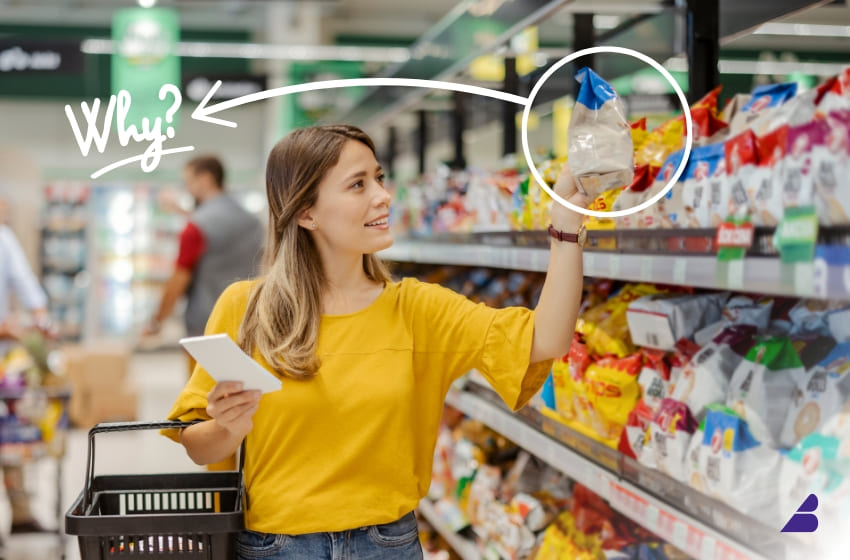
When a consumer walks down a store aisle or scrolls through an online marketplace, their decision to pick one product over another is often made in seconds. In that fleeting moment, product labels play a crucial role in influencing purchasing choices. But what makes a label effective? And how can brands use psychology to make their products more appealing?
Let’s dive into the science behind product labels and what makes them irresistible to consumers.
1. The Power of First Impressions
Research suggests that consumers make subconscious decisions about products within 7 seconds of seeing them. Your label is the first thing they notice, and it must:
✔ Capture attention – Stand out on crowded shelves.
✔ Communicate value – Instantly convey the product’s benefits.
✔ Evoke emotion – Create a sense of trust, excitement, or desire.
💡 Example: Coca-Cola’s signature red label stimulates excitement and energy, making it instantly recognizable worldwide.
🔑 Takeaway: Your label should create an instant, positive first impression to boost sales.
2. The Role of Colors in Consumer Psychology
Different colors trigger different emotions and behaviors in consumers. Understanding color psychology can help brands choose label colors that align with their identity and target audience.
🎨 Color Meanings in Branding:
- 🔴 Red – Passion, excitement, urgency (e.g., Coca-Cola, KitKat).
- 🟠 Orange – Energy, enthusiasm, affordability (e.g., Fanta, Amazon).
- 🟡 Yellow – Happiness, warmth, optimism (e.g., Lay’s, McDonald’s).
- 🟢 Green – Nature, health, sustainability (e.g., Starbucks, Whole Foods).
- 🔵 Blue – Trust, reliability, professionalism (e.g., Nivea, Oral-B).
- ⚫ Black – Luxury, sophistication, exclusivity (e.g., Chanel, Rolex).
💡 Example: Health and organic brands often use green packaging to symbolize nature and wellness, making them more appealing to eco-conscious consumers.
🔑 Takeaway: Choose label colors strategically to align with your product’s message and target audience.
3. Typography: The Silent Persuader
The font on a label is more than just text—it conveys personality, trust, and readability. Fonts can evoke different feelings and influence purchasing behavior.
🔠 Font Psychology in Labels:
- Serif Fonts (e.g., Times New Roman) – Traditional, trustworthy, authoritative.
- Sans-serif Fonts (e.g., Helvetica, Arial) – Modern, clean, approachable.
- Script Fonts (e.g., Pacifico, Lobster) – Elegant, creative, premium.
- Bold Fonts – Strong, confident, attention-grabbing.
💡 Example: Luxury brands like Dior and Gucci use elegant serif fonts to signal exclusivity, while brands like Apple and Google use clean sans-serif fonts for a modern, minimalist appeal.
🔑 Takeaway: Use typography that matches your brand personality and enhances readability.
4. The Power of Words: Label Copy that Sells
A great product label doesn’t just look good—it speaks directly to the consumer. The wording on a label should be clear, compelling, and persuasive.
📢 Effective Label Messaging Tips:
✔ Highlight Benefits – “Boosts Immunity” is more persuasive than just “Vitamin C.”
✔ Use Action Words – “Instantly Refreshes,” “Deep Cleans,” or “Energizes Your Day.”
✔ Incorporate Storytelling – A short tagline or backstory adds emotional connection.
✔ Keep It Concise – Shoppers scan, not read. Less is more.
💡 Example: Dove’s “Real Beauty” branding with gentle, caring language makes it feel authentic and relatable to consumers.
🔑 Takeaway: Use simple yet powerful words that communicate benefits and build trust.
5. Symbols & Certifications: The Trust Factor
Consumers are more likely to buy a product if they see trust symbols and certifications on the label. These elements assure quality and safety, increasing brand credibility.
🏆 Trust-Boosting Label Elements:
✔ Organic & Non-GMO Seals – Appeals to health-conscious buyers.
✔ Cruelty-Free & Vegan Badges – Attracts ethically-driven shoppers.
✔ Eco-Friendly Symbols – Reinforces sustainability efforts.
✔ Award Badges & Ratings – Signals high product quality and popularity.
💡 Example: Labels featuring a “100% Natural” or “Dermatologist Approved” stamp can instantly boost consumer confidence.
🔑 Takeaway: Adding credibility symbols to your label enhances trust and purchase intent.
6. Interactive & Smart Labeling Trends
With digital technology evolving, brands are integrating interactive elements into their labels to enhance engagement.
📲 Modern Label Trends:
✔ QR Codes – Directs users to product information, videos, or exclusive offers.
✔ Augmented Reality (AR) Labels – Offers an interactive 3D experience.
✔ Smart Packaging – Temperature-sensitive or freshness-indicating labels.
💡 Example: Wine brands are using AR labels that allow customers to scan and hear stories about the vineyard, adding an immersive experience.
🔑 Takeaway: Smart labels create a tech-savvy, engaging brand experience.
Conclusion: Labels Are Silent Salespeople
A well-designed product label is not just a sticker—it’s a silent salesperson that influences consumer perception, trust, and purchase behavior. By strategically using color psychology, typography, messaging, and interactive elements, brands can create labels that stand out and drive sales.
🔹 Does your product label make an impact? It might be time for a refresh!




